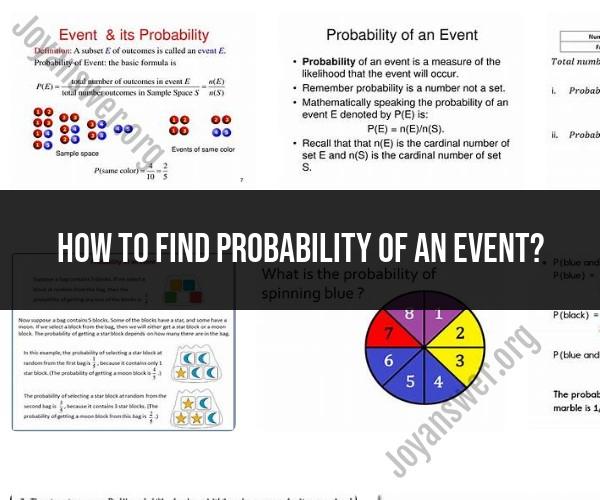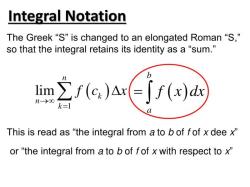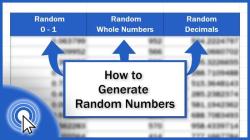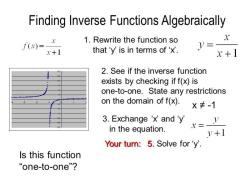How to find probability of an event?
To find the probability of an event, you can use the following fundamental concept:
Probability = (Number of Favorable Outcomes) / (Total Number of Possible Outcomes)
Here are the steps to calculate probability:
Identify the Event: Clearly define the event for which you want to calculate the probability. This event could be anything from rolling a specific number on a die to drawing a particular card from a deck.
Determine Favorable Outcomes: Determine how many outcomes are considered favorable or successful for the event. These are the outcomes that match the criteria you've defined. For example, if you're rolling a six-sided die and want to find the probability of rolling a 4, there is only one favorable outcome (rolling a 4).
Count Total Outcomes: Calculate the total number of possible outcomes for the event. This includes all the different outcomes that could occur, regardless of whether they are favorable or not. For example, when rolling a standard six-sided die, there are six possible outcomes (numbers 1 through 6).
Calculate Probability: Plug the values from steps 2 and 3 into the probability formula:
Probability = (Number of Favorable Outcomes) / (Total Number of Possible Outcomes)
For example, if you're rolling a six-sided die and want to find the probability of rolling a 4:
Probability = (1 favorable outcome) / (6 possible outcomes)
Probability = 1/6
So, the probability of rolling a 4 on a six-sided die is 1/6.
It's important to note that probabilities are typically expressed as fractions, decimals, or percentages. In this case, 1/6 is the fraction form of the probability.
Additionally, probabilities always fall between 0 and 1, where:
- A probability of 0 means the event is impossible.
- A probability of 1 means the event is certain.
- A probability between 0 and 1 indicates the likelihood of the event occurring, with higher values indicating a higher likelihood.
Calculating the Probability of an Event: Step-by-Step Guide
To calculate the probability of an event, you can follow these steps:
- Identify the sample space. The sample space is the set of all possible outcomes of an experiment.
- Identify the event. The event is the outcome that you are interested in.
- Count the number of favorable outcomes. A favorable outcome is an outcome that satisfies the event.
- Calculate the probability. The probability of an event is the number of favorable outcomes divided by the total number of outcomes.
Example:
Suppose you flip a coin. The sample space is {heads, tails}. The event is getting heads. There is one favorable outcome (heads) and two total outcomes (heads, tails). Therefore, the probability of getting heads is 1/2.
Probability and Statistical Analysis: Methods for Event Probability
There are a number of different methods that can be used to calculate the probability of an event. Some of the most common methods include:
- Classical probability: Classical probability is based on the idea that all outcomes in the sample space are equally likely. To calculate the probability of an event using classical probability, you simply divide the number of favorable outcomes by the total number of outcomes.
- Conditional probability: Conditional probability is the probability of an event occurring given that another event has already occurred. To calculate conditional probability, you use the following formula:
P(A|B) = P(A and B) / P(B)
where:
P(A) is the probability of event A occurring.
P(B) is the probability of event B occurring.
P(A and B) is the probability of events A and B occurring together.
Bayesian probability: Bayesian probability is a type of probability that takes into account prior knowledge about the events that you are interested in. To calculate Bayesian probability, you use the following formula:
P(A|B) = P(B|A) * P(A) / P(B)
where:
- P(A) is the prior probability of event A occurring.
- P(B) is the prior probability of event B occurring.
- P(A|B) is the posterior probability of event A occurring given that event B has occurred.
- P(B|A) is the posterior probability of event B occurring given that event A has occurred.
Applying Probability Theory to Assess Event Likelihood
Probability theory can be applied to assess the likelihood of a wide variety of events. For example, probability theory can be used to assess the likelihood of:
- The weather forecast being correct.
- A sports team winning a game.
- A particular investment making a profit.
- A disease being present in a patient.
Probability theory can also be used to assess the risks associated with different events. For example, probability theory can be used to assess the risk of:
- A plane crash.
- A natural disaster.
- A financial crisis.
By understanding probability theory, you can make better decisions about how to manage your life and your resources.
Here are some examples of how probability theory can be applied to assess event likelihood:
- A weather forecaster can use probability theory to calculate the probability of a particular weather forecast being correct. This information can be used to help people plan their activities and to stay safe.
- A sports team can use probability theory to assess the likelihood of winning a game. This information can be used to make strategic decisions about how to play the game.
- An investor can use probability theory to assess the likelihood of an investment making a profit. This information can be used to make informed investment decisions.
- A doctor can use probability theory to assess the likelihood of a patient having a particular disease. This information can be used to make decisions about how to treat the patient.
Probability theory is a powerful tool that can be used to assess the likelihood of a wide variety of events. By understanding probability theory, you can make better decisions about how to manage your life and your resources.












